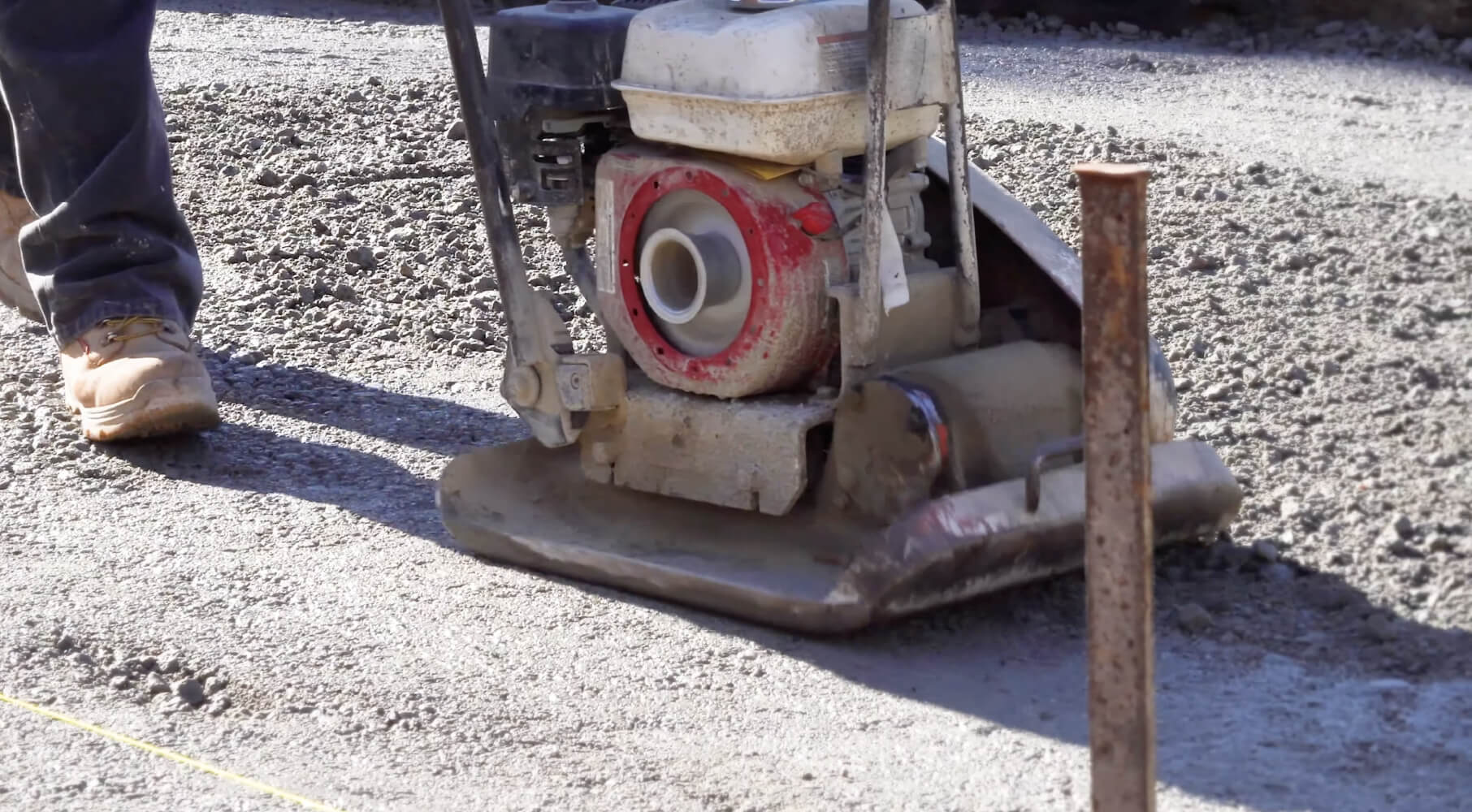How to Install Pavers
When it comes to DIY projects, a paver installation isn’t a quick or easy process, but the results are well worth your time. Whether you’re making small landscaping improvements to a rented property or need a safe, level place to grill, pavers make a great choice. This guide covers everything you need to know to install pavers like your local professionals in Southern California, such as Carlsbad, Leucadia, or Rancho Bernardo. For other states and areas, make sure to research local requirements before starting your installation. Watch the video below and then follow the written steps to install pavers at your own home.
What We’ll Cover:
Paver Installation Tools:
- Shovel
- Tape Measure
- Landscaping Rake
- Tamper or Plate Compactor
- Rubber Mallet
- Hammer
- Wheelbarrow
- Circular Saw with Concrete Blade
- Push Broom
- Garden Hose
- Level
- Speed Square
- String Line
- Stakes
- Eye Protection
- Hearing Protection
Materials:
- Pavers
- Class II Road Base
- Geotextile Fabric
- Bedding Sand
- Concrete
- Joint Sand
- Sealer
1. Prepare the Area
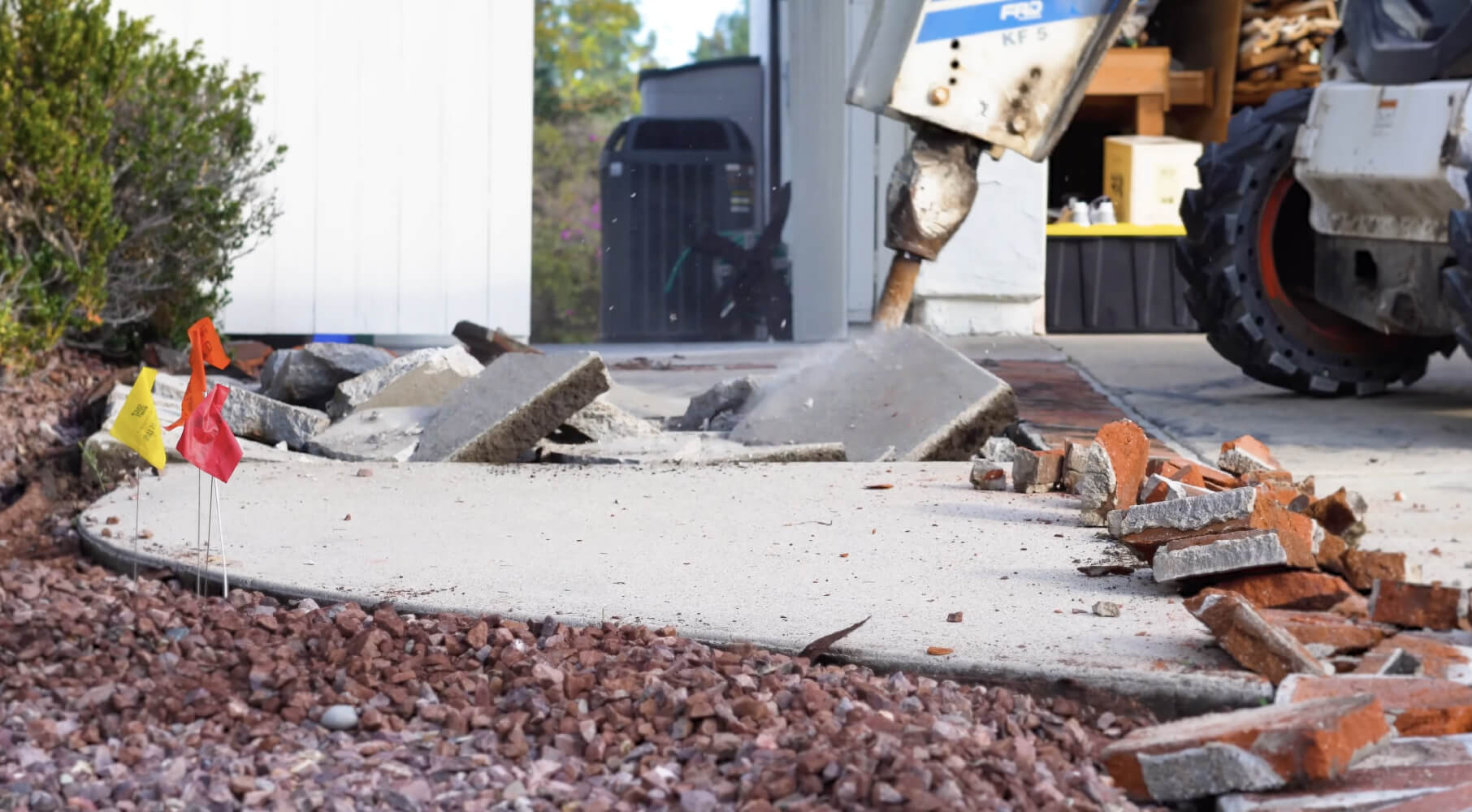
Pre-Demolition
After gathering the tools and materials you need for your project, it’s time to prepare the area where you plan to lay your pavers. It’s always a good idea to call 811 before you dig, to make sure that you don’t accidentally damage buried gas, water or electrical lines.
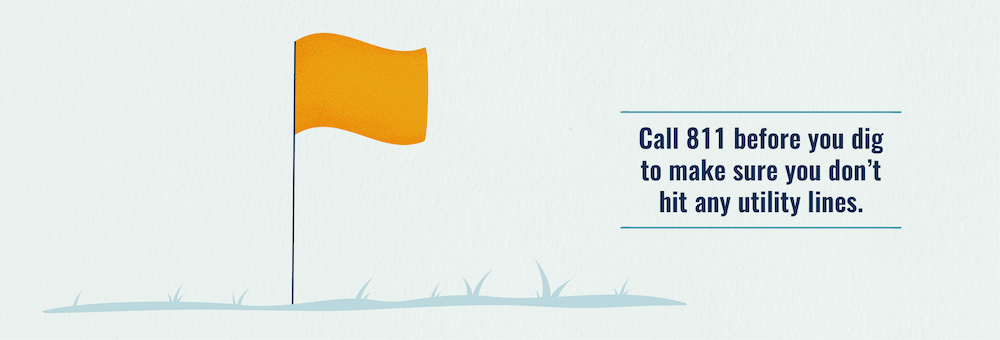
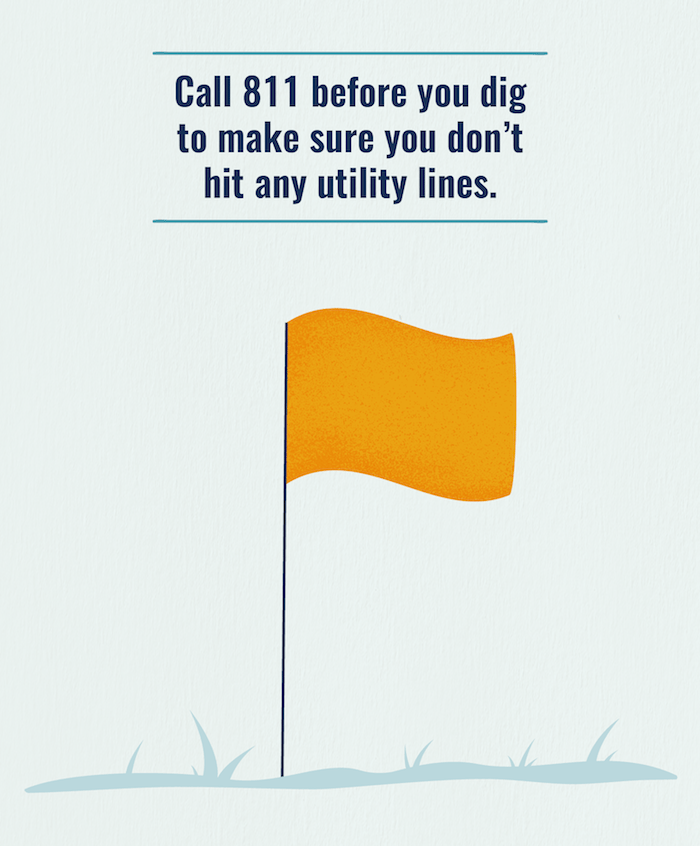
Demolition & Excavation
In the area where you will lay your pavers, remove any grass or existing hardscape surfaces, making sure to not hit any utility lines.
- For vehicular areas like driveways, excavate 9 ½ inches from the end of the graded slope.
- For pedestrian areas, excavate 7 ½ inches from the end of the graded slope.
- For an RV area or commercial vehicle area, excavate 11 ½ inches from the end of the graded slope.
Grade the Area
After you’ve removed any grass or hardscape, use a level to grade the area at a 2 percent slope to ensure proper water drainage away from your home. You may have to build up low areas with soil or remove soil in too tall areas to achieve the desired slope. For the first 4 feet away from the house, you want a 1/4 inch of fall per foot for the first four feet, and 1/8 inch of fall per foot thereafter.
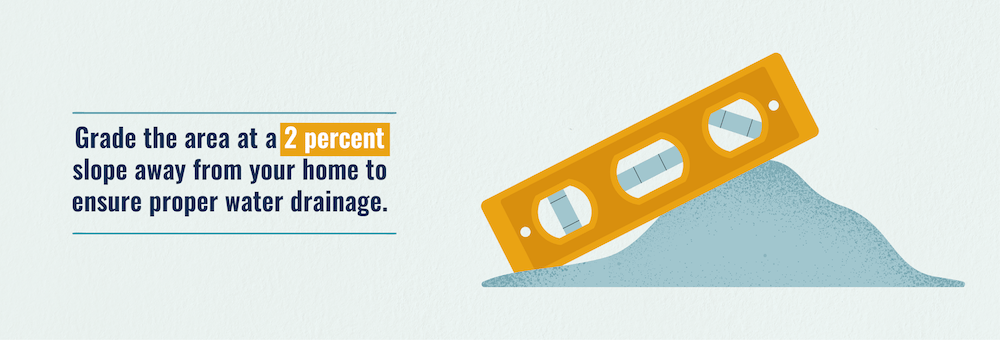
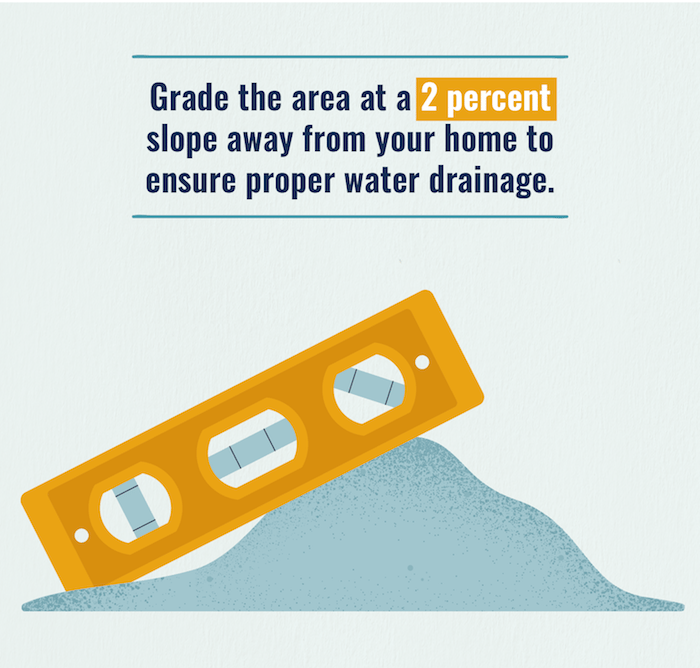
Compact the Sub-base
A strong sub-base is essential to a long-lasting, structurally sound paver installation. Using your tamper or plate compactor, compact the soil or gravel where your pavers will go. This crucial step ensures that there won’t be any unwanted air gaps in your system. Failure to compact a sub-base can lead to sunken or raised pavers further down the road.
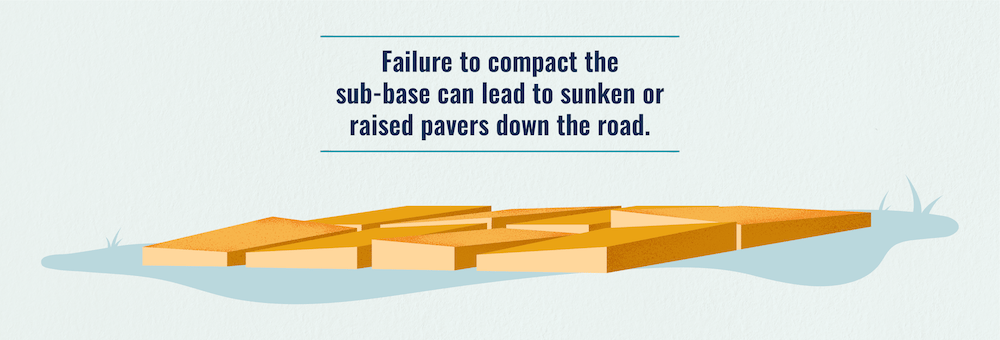
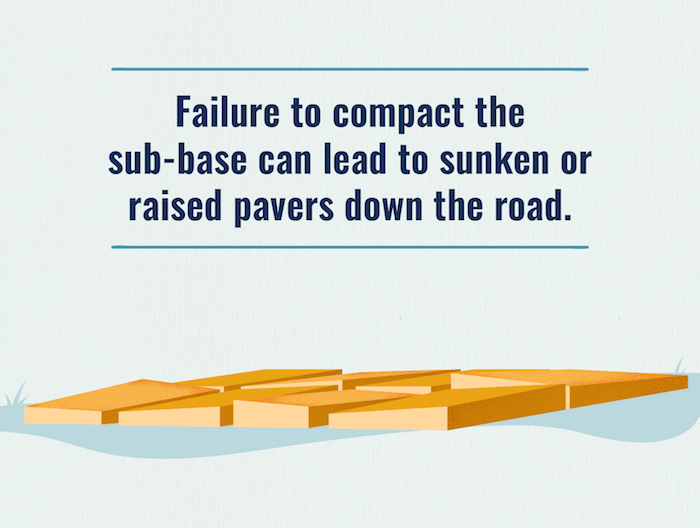
Install the Geotextile Fabric
Using geotextile fabric is strongly recommended – especially for areas with the clay soil commonly found in Southern California. To install, roll out your geotextile fabric and cut it to match the shape of your paver project. This will protect your foundation from the underlying soil. If needed, overlap adjoining pieces of fabric. Secure the fabric with your stakes or geotextile fabric anchoring staples.
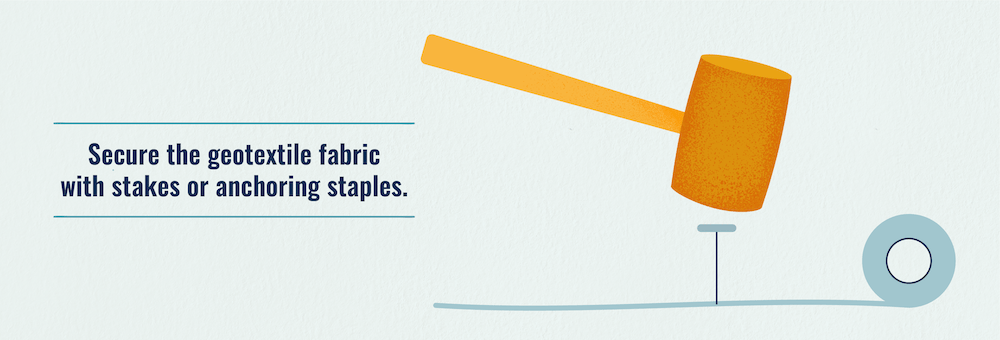
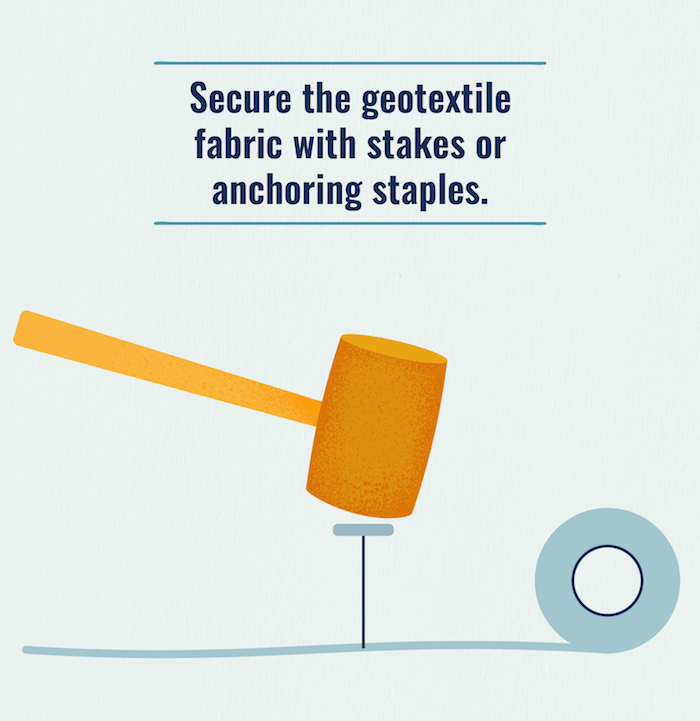
2. Place the Foundation
Prepare Road Base
Now that your land has been properly prepped, it’s time to lay the foundation for your pavers. Pour your Class II road base in increments of two inches, compacting twice with your plate compactor before pouring the next two inches. Compacting all 4, 6 or 8 inches at the same time is not recommended, as it will leave air gaps and can lead to needed repairs down the road.
The total required depth of road base depends on the amount of weight the area will need to support.
- For pedestrian foot traffic, four inches of road base will suffice.
- Six inches is needed for large lawn mowers and vehicles.
- RV areas require 8 inches of road base to support vehicle weight.
After laying the road base, hose it down and compact it until it reaches a compaction level of 95%. If you were to drive over the road base with a tractor at this point, no tire marks would appear due to the road base being as hard as a rock from compaction.
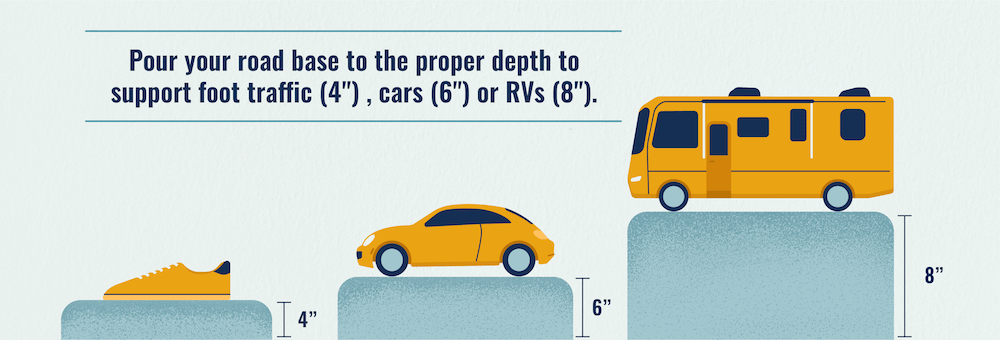
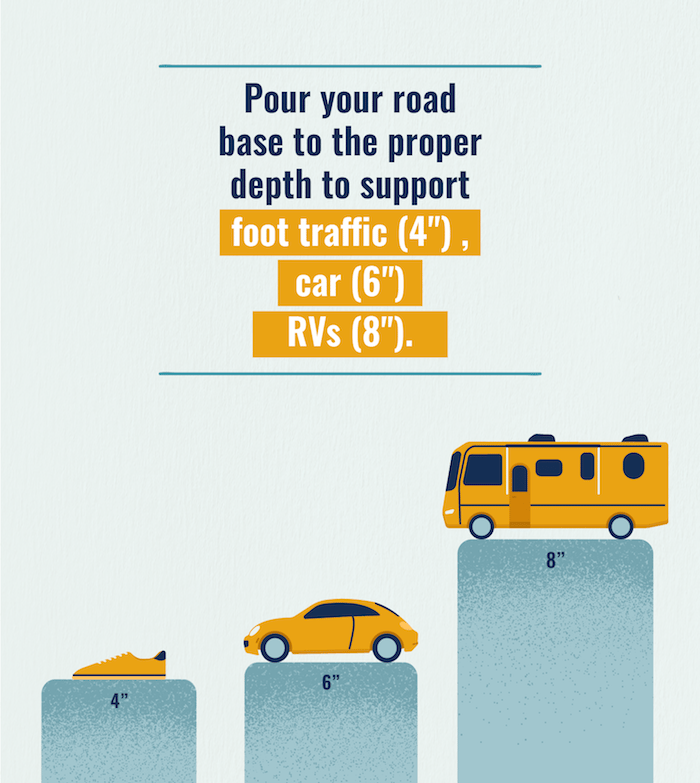
Pour and Screed the Sand
Place your screeding guides (1” pvc pipes) on top of the road base and pour sharp angled bedding sand over the entire base. This is different than the round sand you would find at your local beach. It is sharp and angular, making it perfect for locking into paver joints.
Next, use your rake to roughly level the sand. Follow this up by screeding the sand with a 2×4 to ensure an even 1-inch depth. Ensure that your screeded sand is level before moving on.
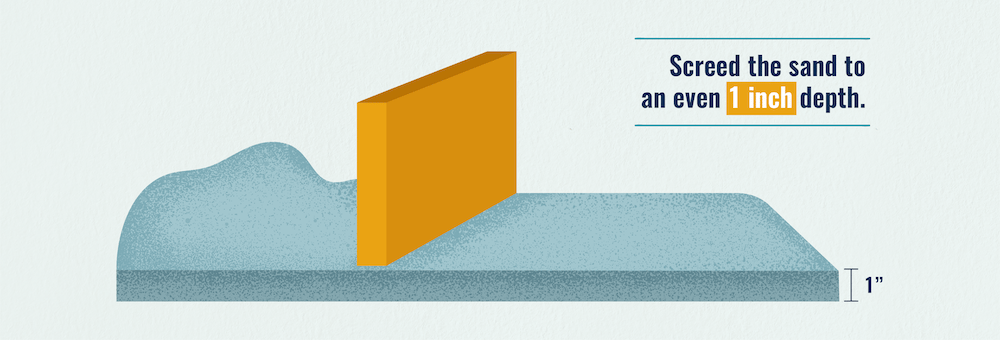
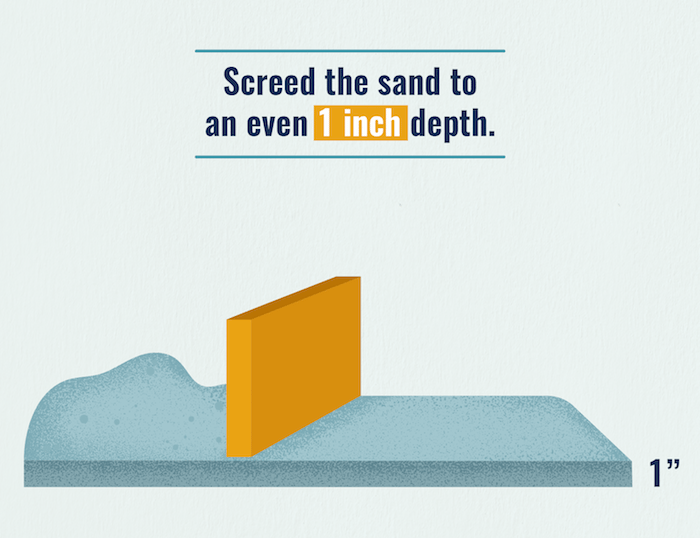
3. Lay Down Pavers
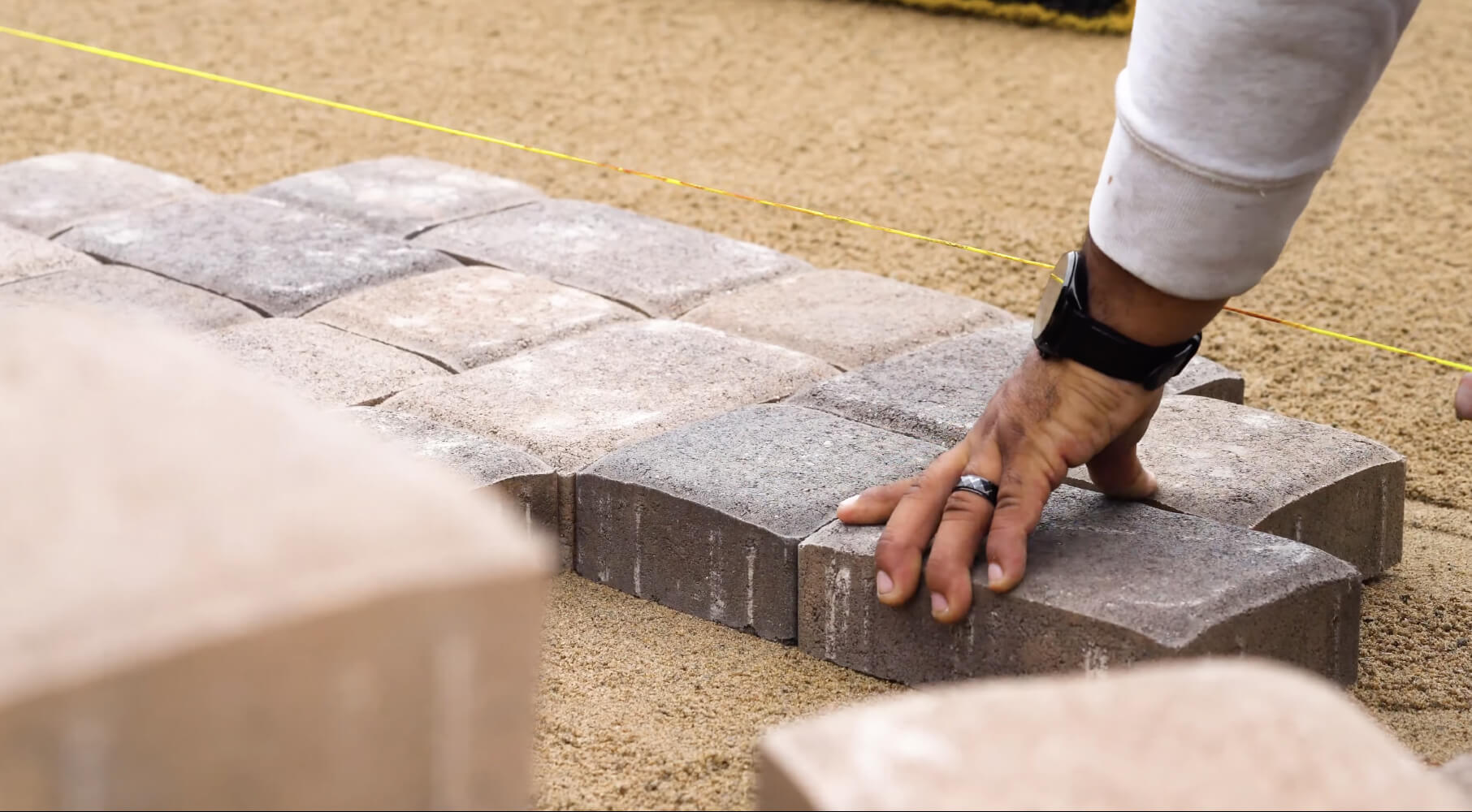
Now for the part you likely imagined when planning your project in the first place. It’s time to lay your pavers. Based on your paver materials, there is a seemingly endless number of paver patterns to choose from. Lay the desired pattern of pavers before cutting any border stones. Be sure to lay them straight down, and not kick or slide them into place which can disturb the sand bed.
Cut the Border Stones
Once the basic field of pavers is established, mark the stones on the border. Now you can safely remove and wet saw them. Wear eye and ear protection while using your circular saw with a concrete blade. Keep in mind when cutting border stones to avoid sharp angles that can make mowing the adjacent lawn difficult.
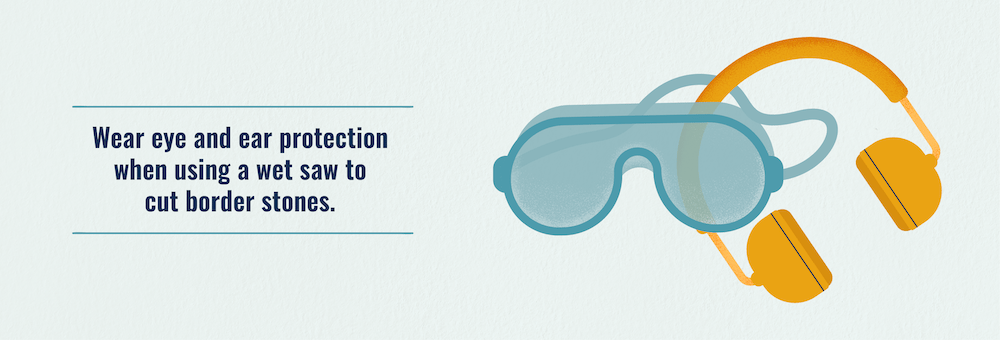
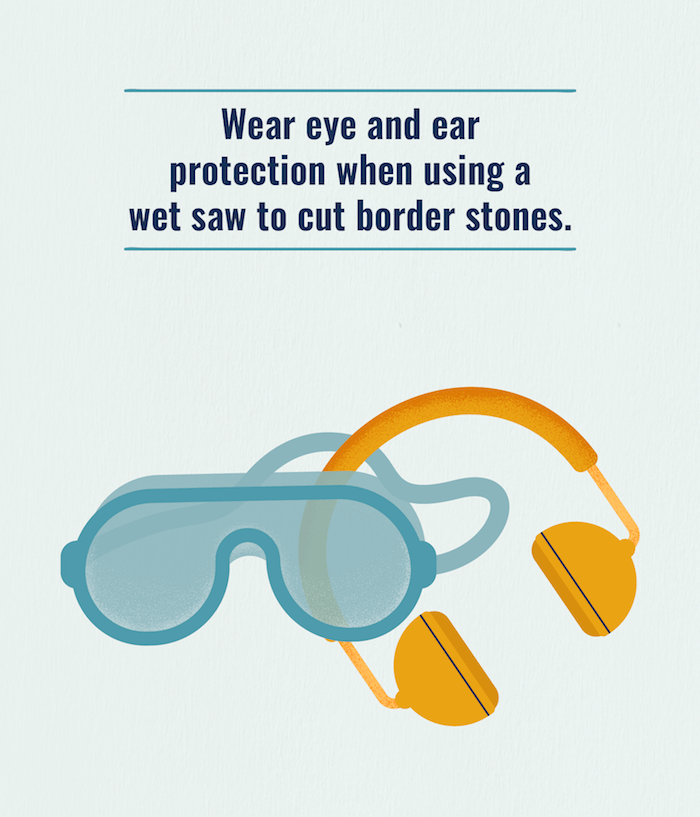
4. Install Edging
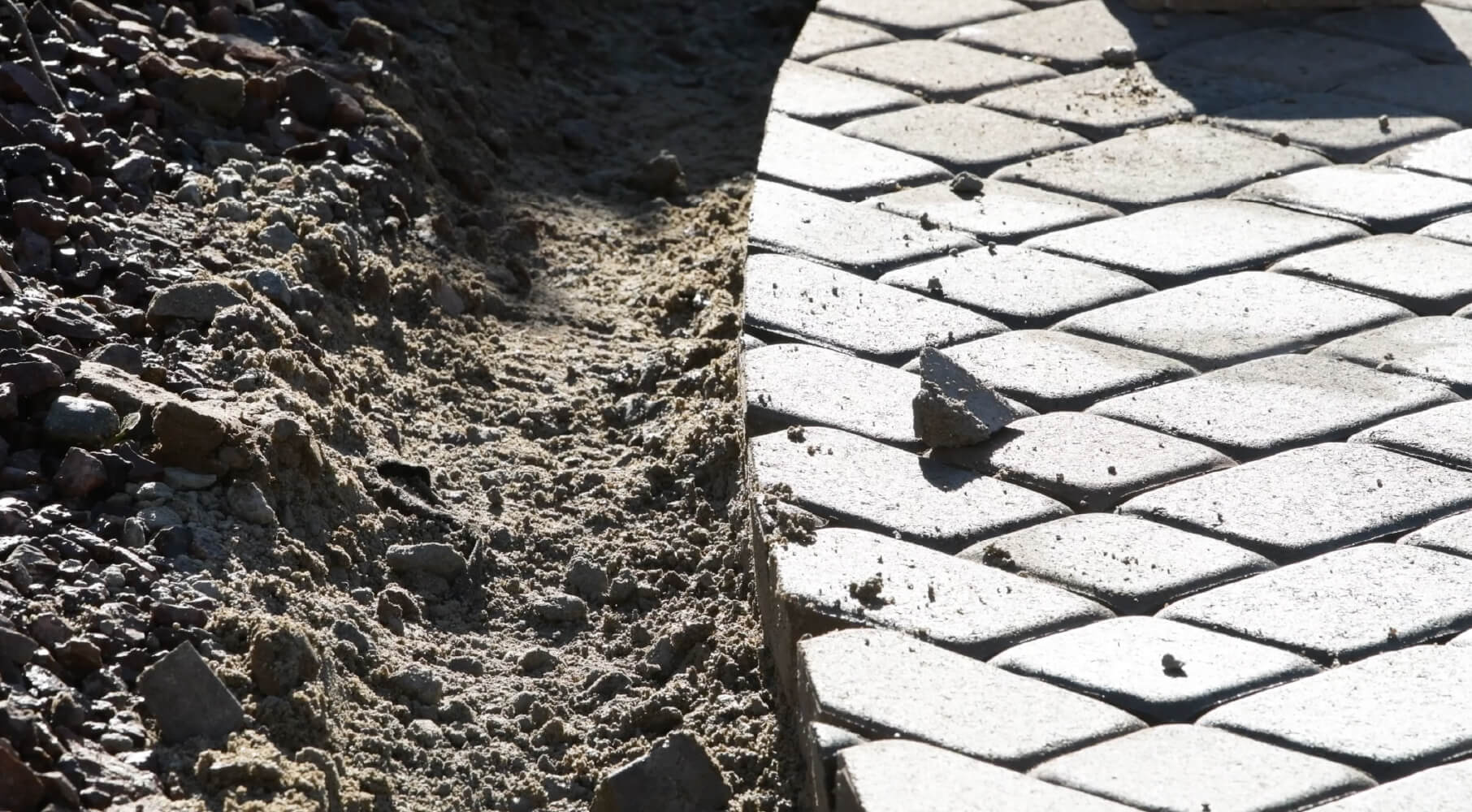
Trench the Border Stone Area
Before replacing the border stones, trench the areas that lay against grass, dirt or asphalt. Your trench depth should reach the native soil (5 ½ inches for a patio and 7 ½ inches for a driveway) and extend the same width as your border stone.
Next, install proper bond beam footings into your trench. Rebar can be added for additional support and longevity (optional). Pour concrete, set your newly cut border stones in place and tamp them down. This can result in excess concrete on the side of the border stones. Be sure to remove the excess concrete from the outside edges of your pavers for a clean, beautiful finish.
5. Add Joint Sand and Compact
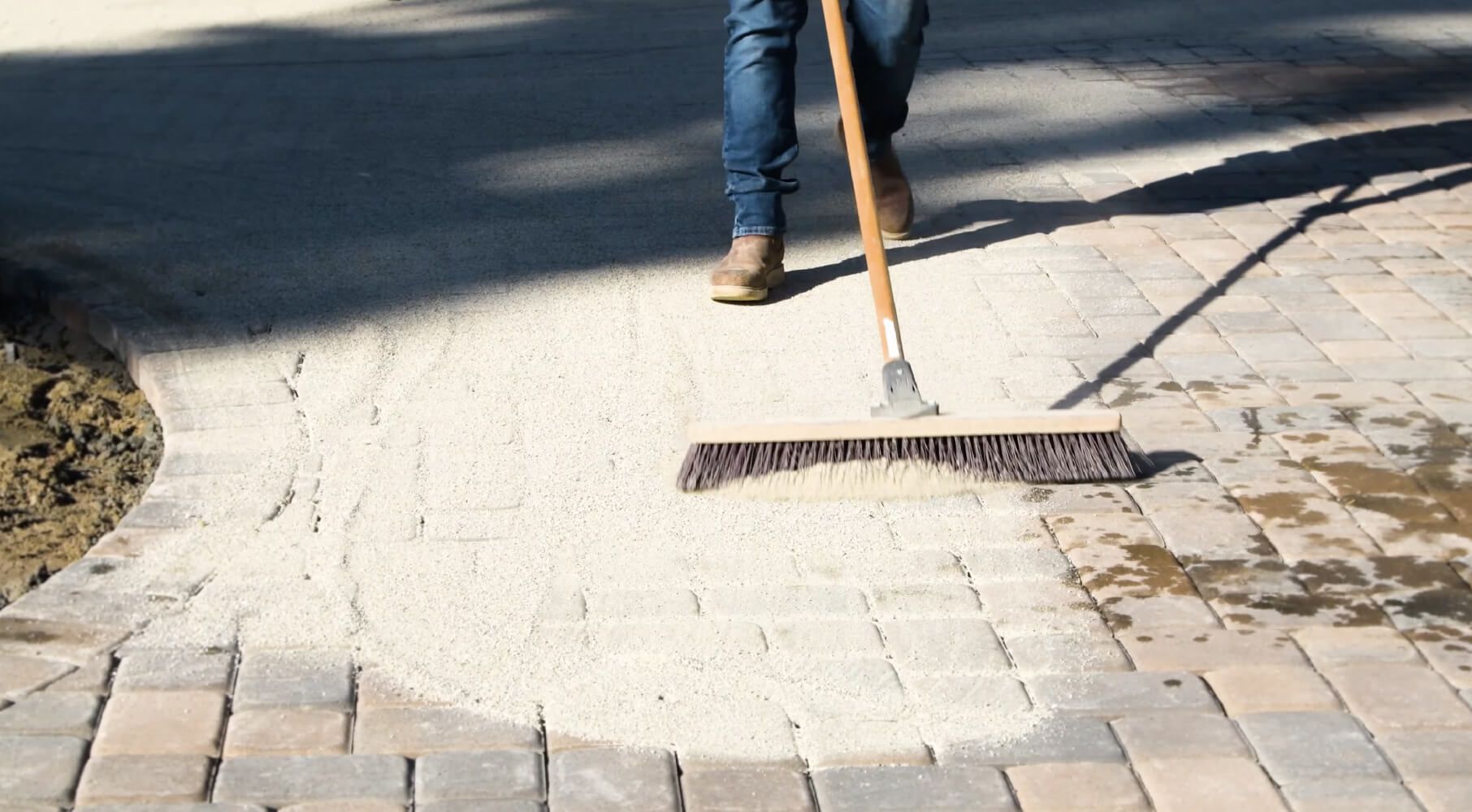
Next, pour joint sand or polymeric sand over the top of the entire paved area until it reaches about ⅛ inch above the top of the pavers. Polymeric sand is typically used with large jointed pavers, and regular joint sand will suffice for smaller joints. After verifying that a pad is being used on your plate compactor, tamp the sand down. Failure to use a pad will result in scratched pavers which will need to be replaced.
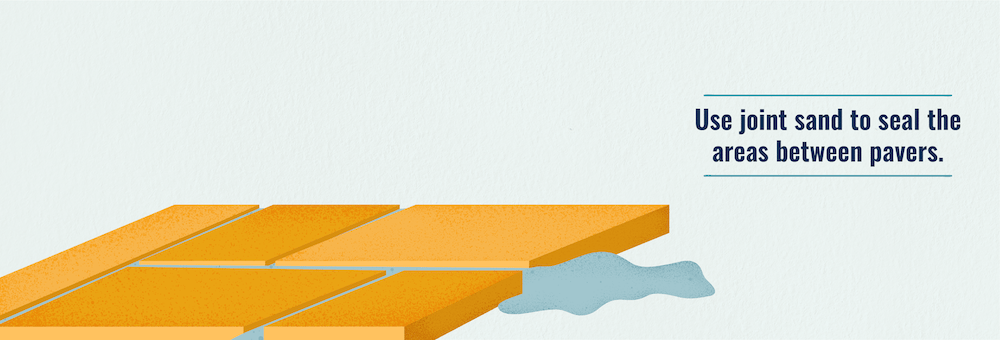
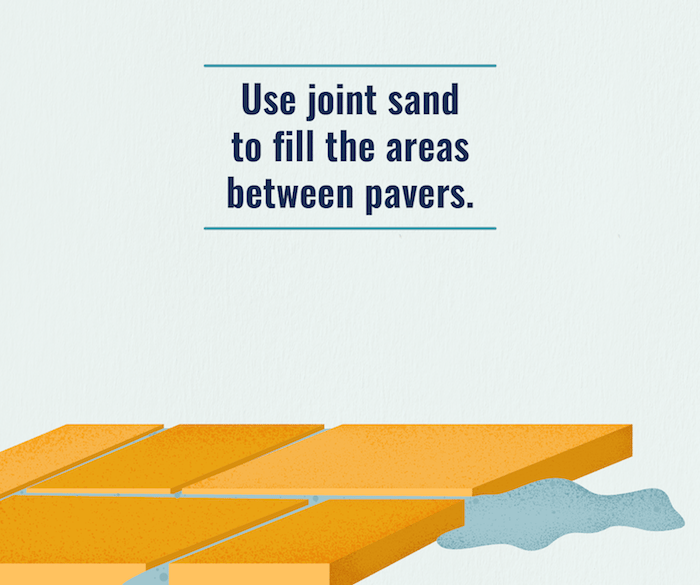
6. Clean and Seal
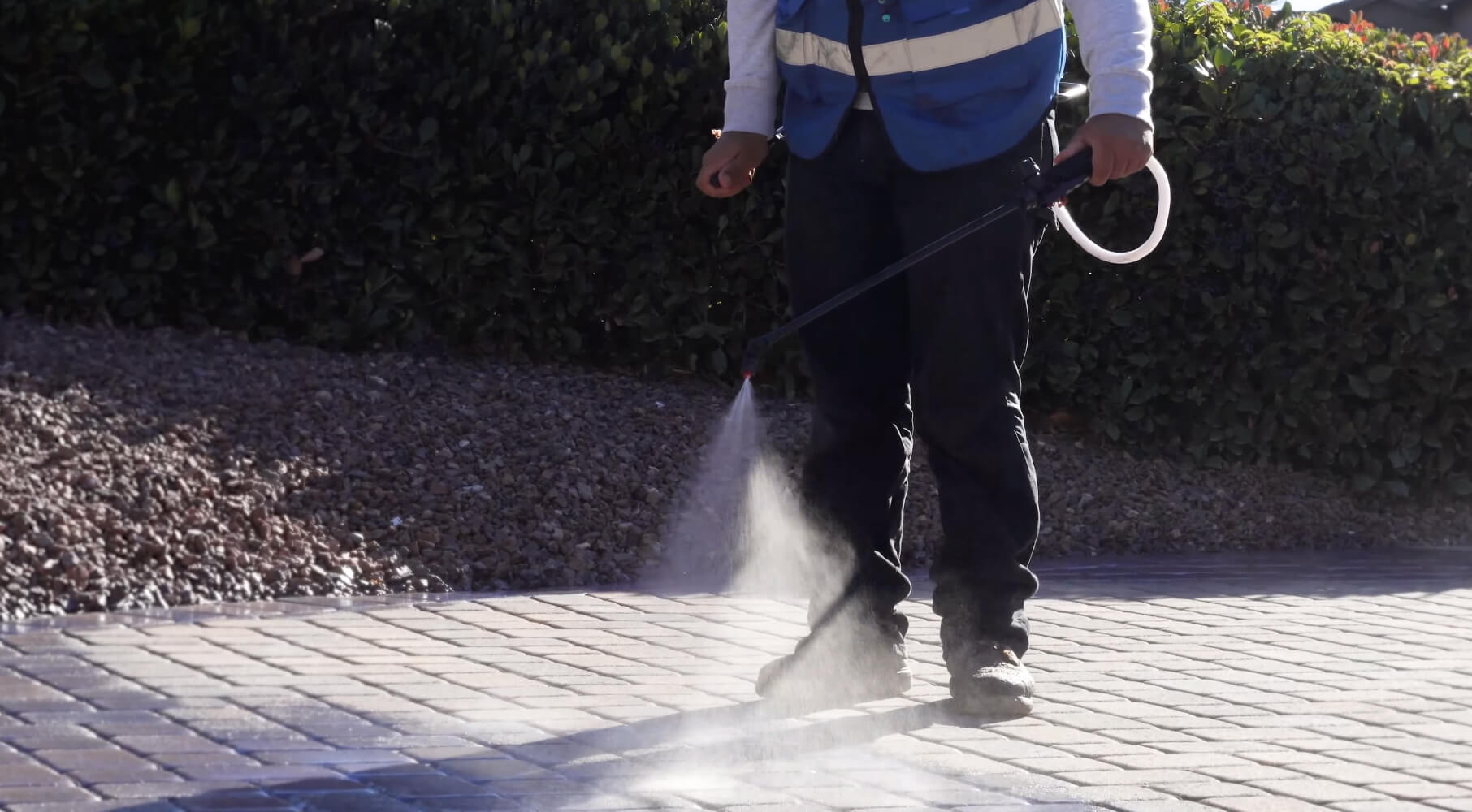
You’re almost finished! Using a broom or leaf blower, clean up excess sand before watering down the entire paved area.
For polymeric sand applications, proper watering is essential for the sand to harden. The best way to water polymeric sand is to adjust your hose nozzle to a soft shower and gently water the pavers until no more water will soak in. It’s important to ensure all polymeric sand is washed off from paver tops to avoid an unsightly haze.
To help your pavers withstand the test of time, we always recommend sealing them with a quality product. After the area dries, apply your paver sealer using a spray applicator and your push broom. Be sure to turn off any automatic sprinklers and avoid moisture for the next 48 hours after sealing your pavers.
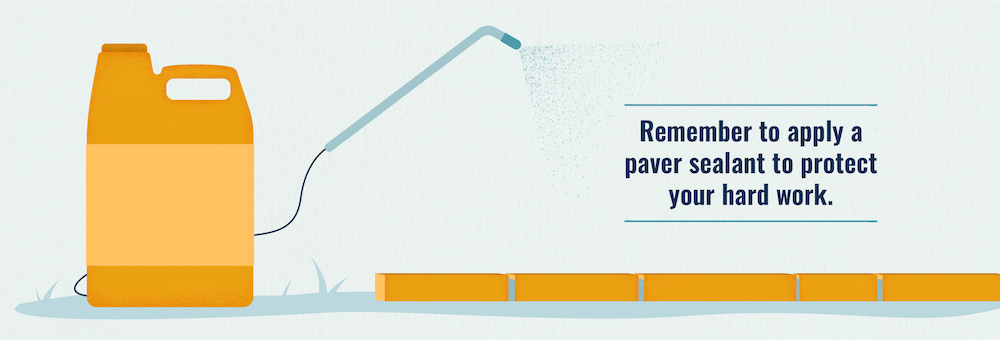
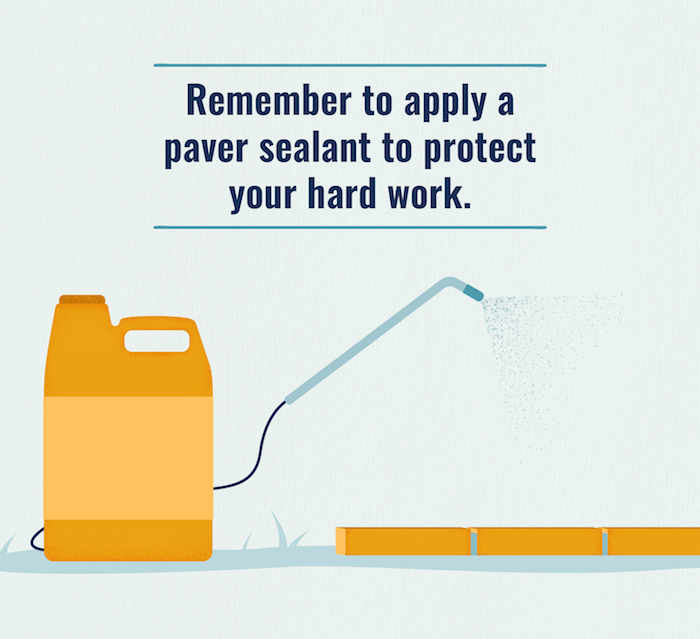
Enjoy Your Brand New Pavers!

Now it’s time to pull up a chair, pour a cold glass of lemonade and admire your hard work. You just completed your very own DIY paver installation project at home! Remember, if you prefer leaving the heavy lifting (and digging, and paver laying) to the professionals, the team at Install-It-Direct is here to help!
Paver Perfection
Our paver professionals will design and build the patio, pathway, or driveway you've always dreamed of.
View Services